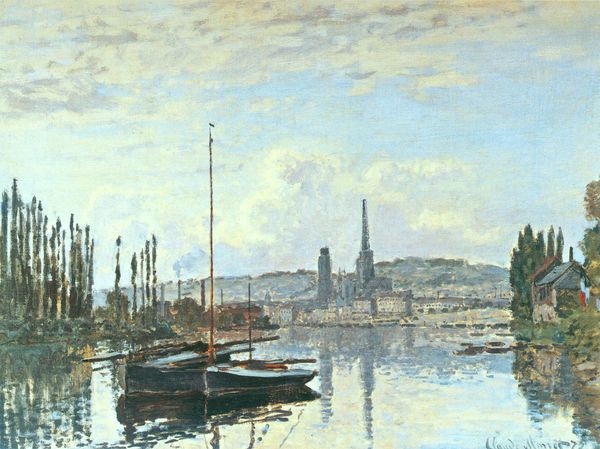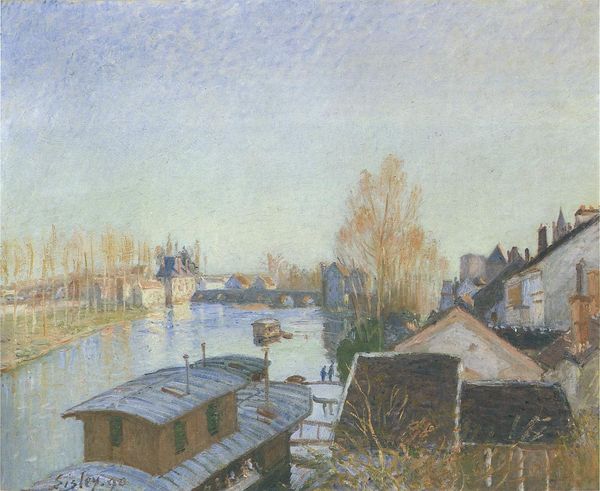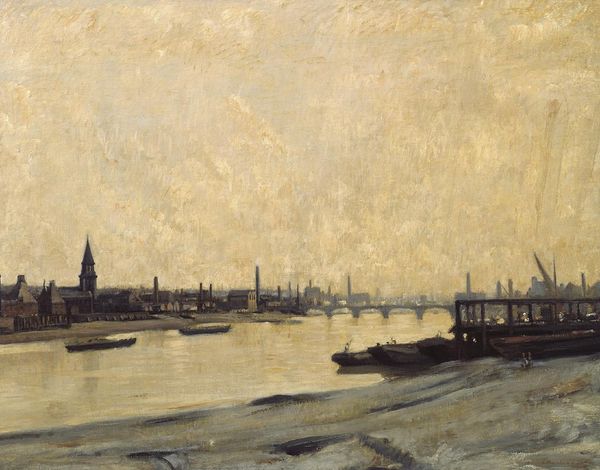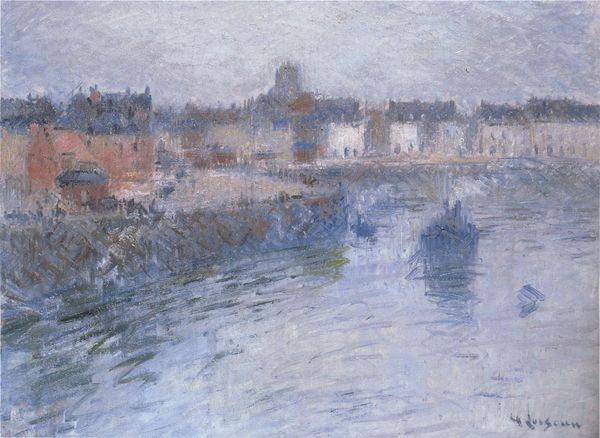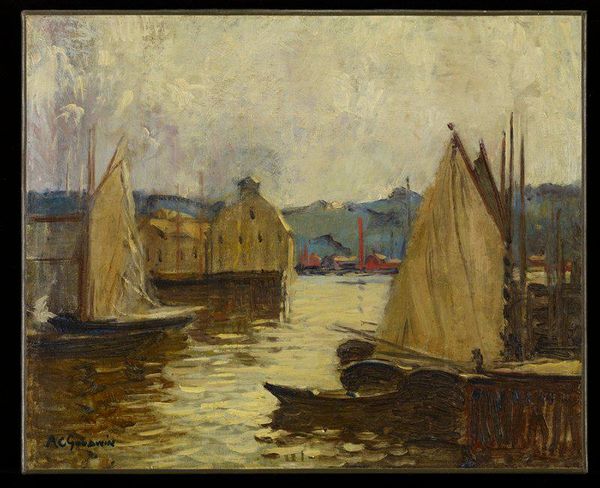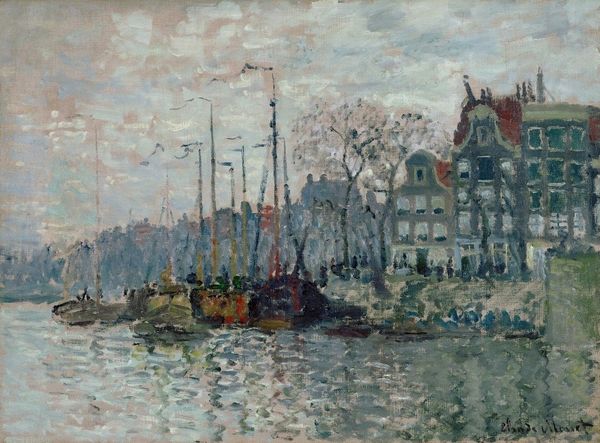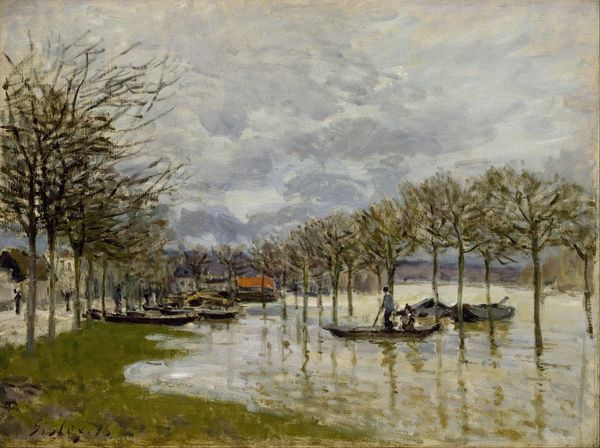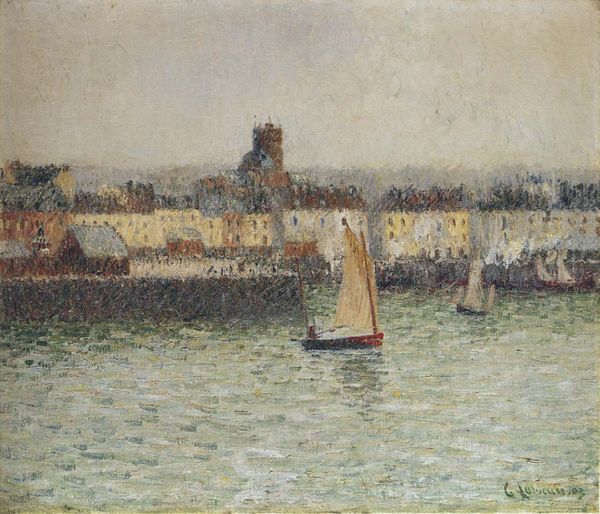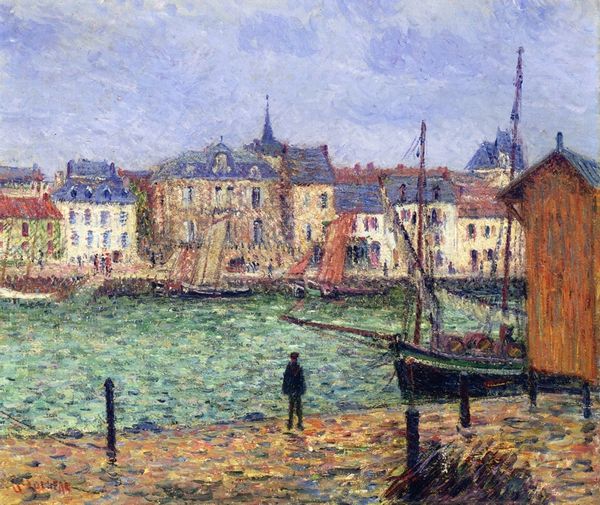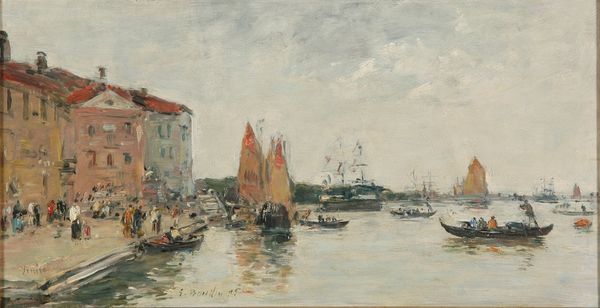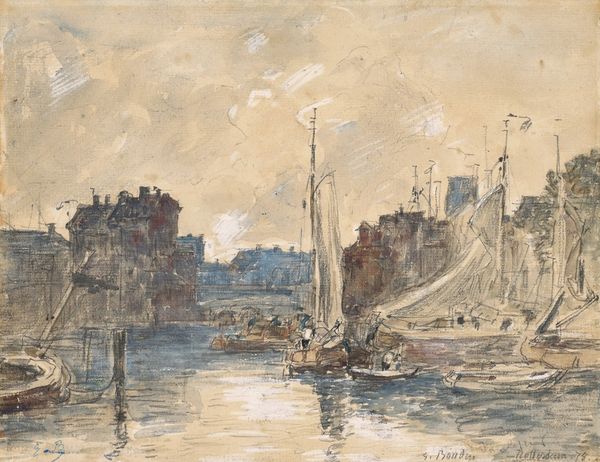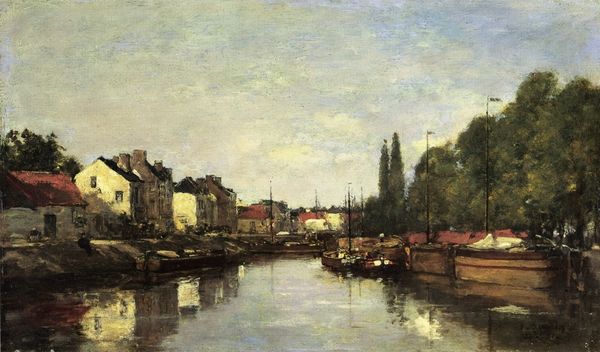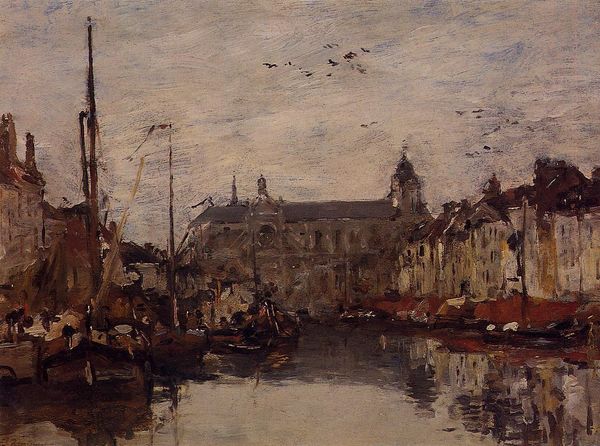
plein-air, oil-paint, impasto
#
impressionism
#
plein-air
#
oil-paint
#
landscape
#
oil painting
#
impasto
#
cityscape
Copyright: Public Domain: Artvee
Curator: Immediately, I’m drawn to the subtle, almost monochromatic color palette. There’s a palpable stillness and introspection to this scene. Editor: Absolutely. What we have here is "Boats on the Seine," an oil painting attributed to Santiago Rusiñol. Its subject matter – barges resting on the river, the city indistinct in the background – is steeped in symbolism, resonant of urban life and transportation through waterways. Curator: The river becomes almost a mirror, blurring the boundary between the real and its reflection. The boats could represent the working class in France at the time, yes? Editor: I see these vessels, though realistically rendered, speaking to a larger cultural memory of journeys, trade, and connection. Rivers as arteries. As for social class, this section of the Seine could point to workers and the general economy in that area, definitely. What speaks most to me here are the boats and how they contrast against the ghostly buildings. Curator: In this artwork, the almost indistinct architecture gives the scene an eternal, ghostly air, don't you agree? One is instantly brought into the city in the distance – what does the landscape mean for urban planning? I'd argue this asks important questions about who and what thrives in changing environments. Editor: It could also reference the role of Paris as this background shadow. One element that stands out to me is the repetition of vertical forms. The masts, the thin bare trees lining the riverbank… They all draw your eye upward, creating a sense of depth but also constraint. Curator: And constraint for whom? For workers, for artists? This feels very significant. And what do you make of the impasto? Editor: I sense how this painter felt the moment in time, captured by that impressionistic impulse and use of oil-paint. This piece helps us better comprehend ourselves and each other. Curator: Well, reflecting on all of that, the way the ordinary is elevated... it asks us to think about whose stories get told. Editor: It's the way the ordinary gets painted, exactly, that elevates our sight in turn.
Comments
No comments
Be the first to comment and join the conversation on the ultimate creative platform.
